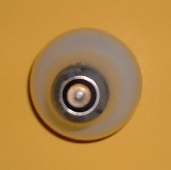ARE YOUR LIGHT BULBS BURNING OUT EARLY
Light bulbs are an important part of each and every home. Typically, incandescent bulbs have a lifespan of around 900 hours. Based on usage of the bulbs for a period of eight hours a day, a bulb should last roughly about four months. If you have replaced bulbs recently and the lifespan doesn't seem to be all that it should, the cause may be problems with the fixture itself. Let's look over some possible causes of light bulb failure in you home. It's better to find these problems sooner than later. Some may lead to electrical shorts or even a fire in your home.
High Voltage in the Home
If the supply voltage to your home is too great, bulbs will generally burn brighter and burn out much faster. To find out, use a volt meter and check the voltage in an outlet or at the service panel. Usually, you'll like to see a voltage of 115 - 125 volts. Anything more is considered excessive and the utility company should be called to correct the problem.
Excessive Fixture Vibrations
A photo of a ceiling fan.
Another cause of bulbs burning out is excessive fixture vibration. A good example of this is a ceiling fan in your home that also incorporates lighting on the unit. When a fan blade becomes unbalanced, the fan starts to shake. This vibration jiggles the filament in the bulb and will lead to shorter bulb life. You can try a rough service bulb to correct this problem.
Bulb Doesn't Light
A photo of an incandescent bulb.
If a bulb doesn't light even after you've changed the bulb, it's likely that one of the following is the trouble. Be sure that the cord on your desk lamp hasn't come unplugged from the receptacle. Check the cord to see if perhaps the cord is damaged. If so, install a new cord. Don't just tape the cord and cause yourself problems in the future. It is also possible that the outlet or the switch controlling the outlet is defective or broken. Check for voltage and replace if necessary.
Bulbs have also been known to be loose in the socket. If so, tighten the bulb to correct the problem.
The Replacement Bulb Won't Light Either
The bulb itself could be the problem. Sometimes, cheaper bulbs will have little or no solder on the contact point of the bulb. These bulbs will cause you problems and won't last very long. Just because you have a package of four bulks and installed a new one, doesn't mean that the bulb isn't defective. Try inserting the bulb in another fixture to verify it's operation. Do yourself a favor and buy a little more expensive bulb that will give you your money's worth.
Open the fixture globe or cover and check to see if the bulb wattage is too large for the fixture. on the side of the fixture is a label that states the appropriate maximum size wattage of bulb to use in the fixture. Yes, a larger size bulb usually will screw right into the socket, but that is where the trouble begins. Using a larger bulb will cause excessive heat inside the globe and cause the fixture to overheat. Due to the excessive heat, the bulb life will be much less and will likely show signs of trouble. To correct this, use the appropriate size bulb.
The Bulb Flickers
Install/Remove Bulb
When a bulb is loose in the socket it can flicker on and off. Simply tighten the bulb to correct the problem. Another problem may be a loose wire connection. Check the connection on the fixture after turning the power off first. Contacts in the center of the socket can get worn or corroded and cause you a lot of headaches. In this case, change the socket. area where the bulb is in contact with or close proximity to the fixture insulation will likely show signs of this heat.
.
Overheated or Burnt Bulb
A photo of an incandescent light bulb base.
Open the fixture globe or cover and check to see if the bulb wattage is too large for the fixture. on the side of the fixture is a label that states the appropriate maximum size wattage of bulb to use in the fixture. Yes, a larger size bulb usually will screw right into the socket, but that is where the trouble begins. Using a larger bulb will cause excessive heat inside the globe and cause the fixture to overheat. Due to the excessive heat, the bulb life will be much less and will likely show signs of trouble. To correct this, use the appropriate size bulb.
The area where the bulb is in contact with or close proximity to the fixture insulation will likely show signs of this heat.
.
Circuit Breakers Tripped or Fuses Blown
A photo of plug fuses.
Plug Fuses. Timothy Thiele
If the circuit isn't working due to a tripped breaker or blown fuse, then there is likely a short circuit. The cord may be shorted, a plug could be defective, or the light socket is shorted or defective. In any of these cases, replace the defective parts before resetting the breaker or replacing a fuse.
Can Light Turns On and Off
The area in an attic around a can light can be covered up by insulation and cause improper air circulation for heat in a fixture. This too will cause short bulb life. Be sure that there is appropriate space between the can light and attic insulation to correct this problem. You can build a box around the can light to allow for appropriate space.










Comments
Post a Comment